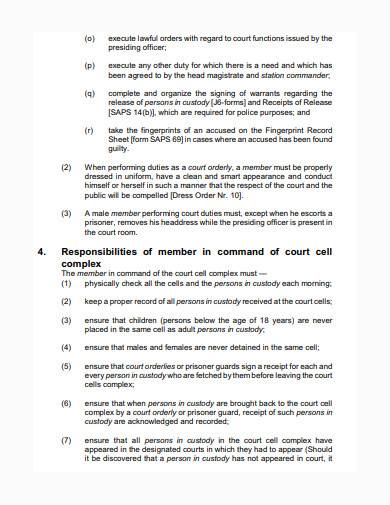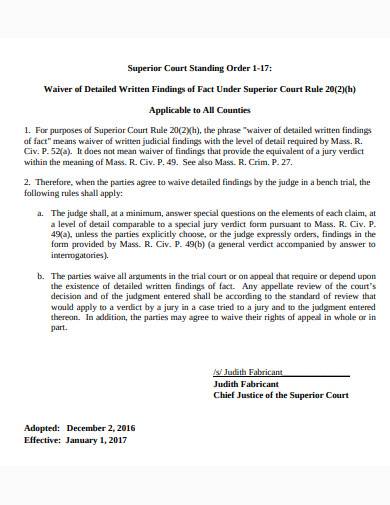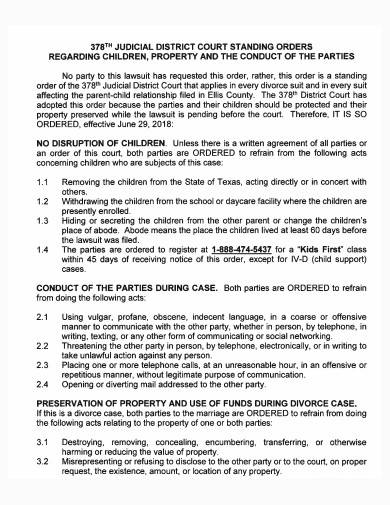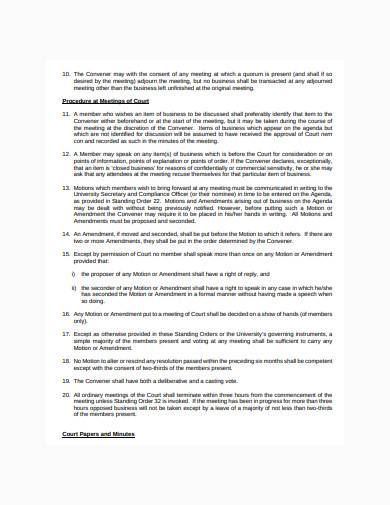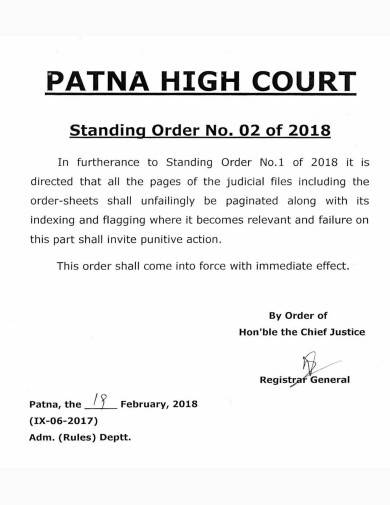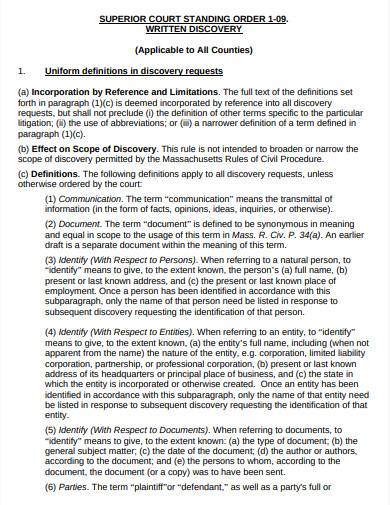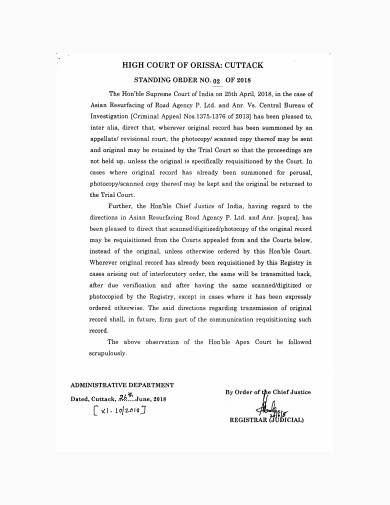There’s much we need to learn about the law. Although basic knowledge seems enough for most citizens, those involved in specific cases will want to know more. Among the terms or phrases thrown around in court–and in movies–is court standing order. Despite its technical nature, its use is rather popular. But what do we, the common people, really know about it?
What Is a Court Standing Order?
A court standing order is a progressive order issued by individual judges on a subject. The order applies to all cases that are pending before a court. A court standing order is a rule that stays in place until withdrawn or changed. The term “standing order” simply means that the court order is still active and enforceable. Court orders can be temporary or long-term orders. Examples of temporary court orders include temporary restraining orders (TRO) and temporary protective order (TPO). Family law also has its set of court orders issued. Family law standing court orders are child support orders, spousal support orders, child visitation orders, and property division orders, to name a few.
How to Get a Court Standing Order in a Family Court
Family courts serve cases that involve divorce, child custody, domestic violence, etc. To get a court standing order for a family case, simply follow the steps below. Keep in mind that filing guidelines may vary per state, so check with your local court on the correct filing process to follow.
1. Get a Family Court Order
Determine if you need to get a family court order. To get a family court order, your case must be family related issues including the three cases already mentioned above. The court order must be filed from the family court where the family resides, or the state where the child lives if a child is involved in the case. Family cases should not be filed in federal court, but in a state court. Follow the specific filing rules and requirements provided in that state.
2. Get a Court Order for Paternity
There are three individuals who can file in court to establish paternity and they are the child, the mother of the child, and the alleged father of the child. A court order is only necessary if the alleged father of the child does not accept or agree on paternity. If both parents agree on paternity, then a court order is not necessary. Men don’t have automatic parental rights after their child is born. That is why they need to establish paternity so that they can handle child support issues, child custody issues, and child visitation issues. There are instances when a court orders a DNA test to determine the father of the child.
3. Get a Court Order for Divorce
Divorce is a family issue and it must be filed in a family court. You’ll need a court order granting the divorce and to do that, you’ll need to find a good reason. All states in the United States allow no-fault divorces, which means that there is no need to provide proof that one of the spouses did something wrong. A reason recognized by the state is enough to get a no-fault divorce.
4. Get a Court Order for Child Support, Child Custody, or Child Visitation
A court order for child support is necessary when both the parents of the child cannot agree on the amount of child support that each party provides, or if they cannot agree on who gets the custody. This is the time when court intervention becomes needed. The court will decide and issue an order on what the parents must do, who gets child custody, the amount of child support to provide, etc.
5. Consult a Lawyer
You’ll need to consult a lawyer to better understand the process and choose the best option for your case.
10+ Court Standing Order Samples in PDF | DOC
1. General Court Standing Order Sample
2. Superior Court Standing Order Template
4. Court Standing Order Sample
5. Court Standing Order Template
6. High Court Standing Order Sample
7. Court Standing Order Example
8. Municipal Court Standing Order Sample
9. Court Standing Order in PDF
10. Formal Court Standing Order Sample
11. Court Standing Order in DOC
FAQs
What Is a Standing to Sue?
“Locus standi” is the Latin term for standing to sue. The standing is about which party gains the right to file a case or bring it to court. Courts must only hear actual cases or actual controversies. Standing law helps implement this requirement by requiring the plaintiff to suffer an injury caused by the other party. This way, the court can hear and address the case. Standing to sue has three elements, namely, accusation, injury, and redressability, respectively.
Is a Standing Needed for a Lawsuit to Proceed?
There are many cases in a court docket just waiting for their chance. This means the court can only spend their time and effort on those with actual impact. Due to the requirement of courts to enforce the law, they only hear cases where the plaintiff has suffered injuries from the other party. If the plaintiff has not suffered any injury (physical, emotional, or financial), then the lawsuit cannot proceed because there is nothing that they can address in the case. Courts are also prevented from litigating political questions that are abstract.
What Does Standing Order Mean in Divorce?
Following the filing of a divorce form, the judge issues a standing order that sets the rules for both parties compliance. Violating court orders opens up another can of worms, so keep yourself informed and follow all specifically set rules while the divorce case is in progress.
Ignorance of the law is not an excuse to disregard any court order. A court standing order is just one of the many laws that our justice system uses. It’s good to know what it is and how it can actually be of use when the situation arises. Become more familiar with court standing orders by simply checking out the samples above. They’re just a click away.
Related Posts
Weekly Schedule Samples & Templates
Contractual Agreement Samples & Templates
FREE 9+ Amazing Sample Church Bulletin Templates in PSD | PDF
Sample Business Card Templates
Sample Cashier Job Descriptions
Questionnaire Samples
FREE 10+ Sample HR Resource Templates in PDF
FREE 10+ HR Consulting Business Plan Samples in MS Word | Google Docs | Pages | PDF
FREE 49+ Sample Job Descriptions in PDF | MS Word
FREE 16+ Nonprofit Budget Samples in PDF | MS Word | Excel | Google Docs | Google Sheets | Numbers | Pages
FREE 13+ Academic Calendar Templates in Google Docs | MS Word | Pages | PDF
FREE 10+ How to Create an Executive Summary Samples in Google Docs | MS Word | Pages | PDF
FREE 23+ Sample Event Calendar Templates in PDF | MS Word | Google Docs | Apple Pages
Company Profile Samples
FREE 10+ Leadership Report Samples [ Development, Training, Camp ]

